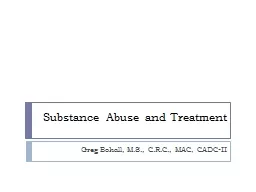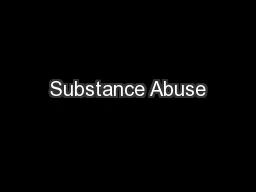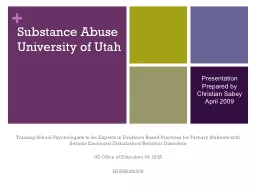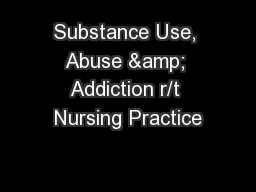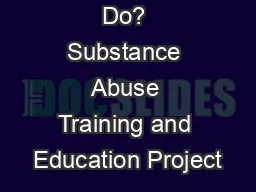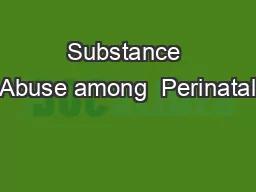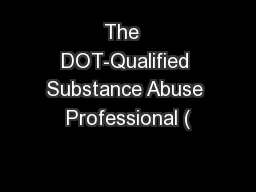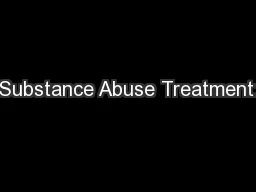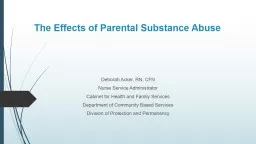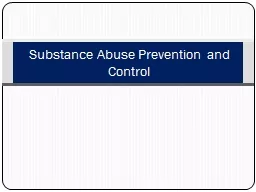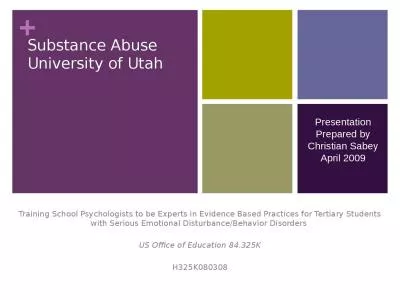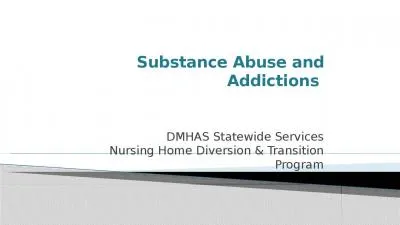PPT-Substance Abuse and Treatment
Author : olivia-moreira | Published Date : 2017-11-02
Greg Bohall MS CRC MAC CADCII Agenda Diagnosing Types of Use Stages of Addiction Types of Drugs Routes of Administration Treatment Diagnosing What things do
Presentation Embed Code
Download Presentation
Download Presentation The PPT/PDF document "Substance Abuse and Treatment" is the property of its rightful owner. Permission is granted to download and print the materials on this website for personal, non-commercial use only, and to display it on your personal computer provided you do not modify the materials and that you retain all copyright notices contained in the materials. By downloading content from our website, you accept the terms of this agreement.
Substance Abuse and Treatment: Transcript
Download Rules Of Document
"Substance Abuse and Treatment"The content belongs to its owner. You may download and print it for personal use, without modification, and keep all copyright notices. By downloading, you agree to these terms.
Related Documents

